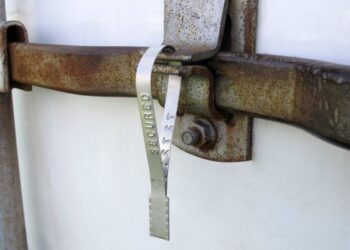In today’s interconnected global economy, securing supply chains has become a paramount concern for businesses across various industries. The increasing complexity of supply chain networks, coupled with the rising threats of theft, tampering, and terrorism, has necessitated stringent measures to safeguard the integrity of goods in transit. One powerful tool in this endeavor is the ISO 17712:2013 certification, which sets a robust standard for container seals used in international shipping. This certification not only bolsters the security of the supply chain but also provides a competitive advantage by instilling confidence in partners and customers alike.
ISO 17712:2013, titled “Freight containers – Mechanical seals,” is an internationally recognized standard developed by the International Organization for Standardization (ISO). The standard establishes guidelines for the design, testing, and classification of mechanical seals used to secure freight containers. These seals play a crucial role in preventing unauthorized access to containers during transportation, ensuring that goods remain intact and uncompromised.
Key components of ISO 17712:2013 certification include:
- Tamper-evident Seals: The standard outlines specifications for seals that are designed to show visible signs of tampering or removal. This is essential for quickly identifying any unauthorized access and addressing potential security breaches.
- Testing Procedures: ISO 17712:2013 sets rigorous testing procedures to evaluate the strength and effectiveness of seals under various conditions. This includes tests for shear resistance, impact resistance, and tensile strength, ensuring that the seals can withstand potential tampering attempts.
- Classification Levels: The certification introduces three classification levels for seals based on their security features and testing results. High-security seals (H) offer the highest level of protection and are recommended for use on high-value or high-risk cargo. Indicative seals (I) are suitable for general cargo, while indicative seals with a barrier (S) provide a mid-level of security.
- Documentation and Traceability: ISO 17712:2013 emphasizes the importance of maintaining proper documentation and traceability for seals. This includes recording seal numbers, suppliers, and other relevant information, enabling easy tracking and accountability throughout the supply chain.
The advantages of obtaining ISO 17712:2013 certification services are manifold:
- Enhanced Security: Certified seals provide a robust deterrent against theft, tampering, and unauthorized access, thereby safeguarding goods and reducing potential losses.
- Compliance: Many international regulations and customs authorities require the use of ISO 17712:2013 certified seals for cargo shipments. Adhering to this standard ensures compliance with global trade requirements.
- Credibility and Trust: Businesses that invest in ISO 17712:2013 certification demonstrate a commitment to supply chain security and reliability. This enhances their credibility in the eyes of partners, stakeholders, and customers.
- Competitive Edge: Certification can set a business apart from its competitors by showcasing its dedication to quality, security, and professionalism.
- Risk Mitigation: By implementing ISO 17712:2013 certified seals, companies can mitigate the risk of unauthorized access, tampering, and theft, thereby reducing potential financial and reputational damage.
Conclusion:
ISO 17712:2013 certification services offer a comprehensive framework for securing the supply chain with precision. By adhering to this standard, businesses can fortify their cargo shipments, reduce security vulnerabilities, and build a reputation for reliability and trustworthiness in the global marketplace. In an era where supply chain security is of paramount importance, ISO 17712:2013 certification provides a vital tool for maintaining the integrity of goods during transit.












